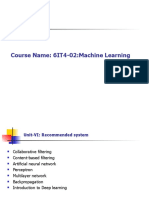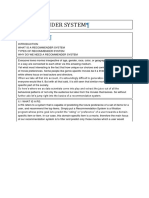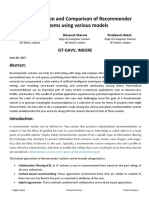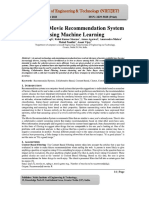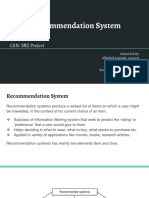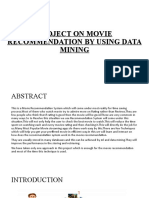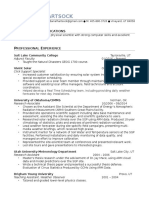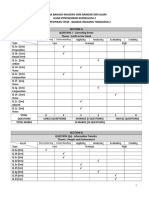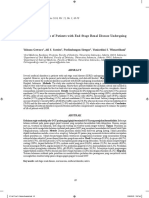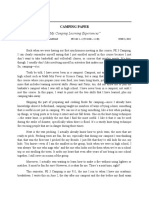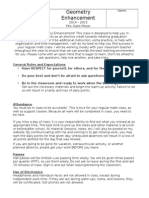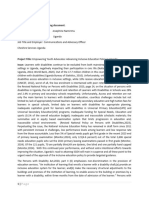0% found this document useful (0 votes)
8 views7 pagesFilter 2
The document discusses various recommendation systems including Collaborative Filtering, Content-Based Filtering, Trending Analysis, and Top Rated Movie suggestions. It highlights the advantages and disadvantages of each method, such as the cold start problem and popularity bias in Collaborative Filtering, and the reliance on rich metadata in Content-Based Filtering. Additionally, it introduces a Hybrid Recommendation System that combines multiple techniques to enhance accuracy in recommendations.
Uploaded by
khoaphd.23itCopyright
© © All Rights Reserved
We take content rights seriously. If you suspect this is your content, claim it here.
Available Formats
Download as DOCX, PDF, TXT or read online on Scribd
0% found this document useful (0 votes)
8 views7 pagesFilter 2
The document discusses various recommendation systems including Collaborative Filtering, Content-Based Filtering, Trending Analysis, and Top Rated Movie suggestions. It highlights the advantages and disadvantages of each method, such as the cold start problem and popularity bias in Collaborative Filtering, and the reliance on rich metadata in Content-Based Filtering. Additionally, it introduces a Hybrid Recommendation System that combines multiple techniques to enhance accuracy in recommendations.
Uploaded by
khoaphd.23itCopyright
© © All Rights Reserved
We take content rights seriously. If you suspect this is your content, claim it here.
Available Formats
Download as DOCX, PDF, TXT or read online on Scribd
/ 7







